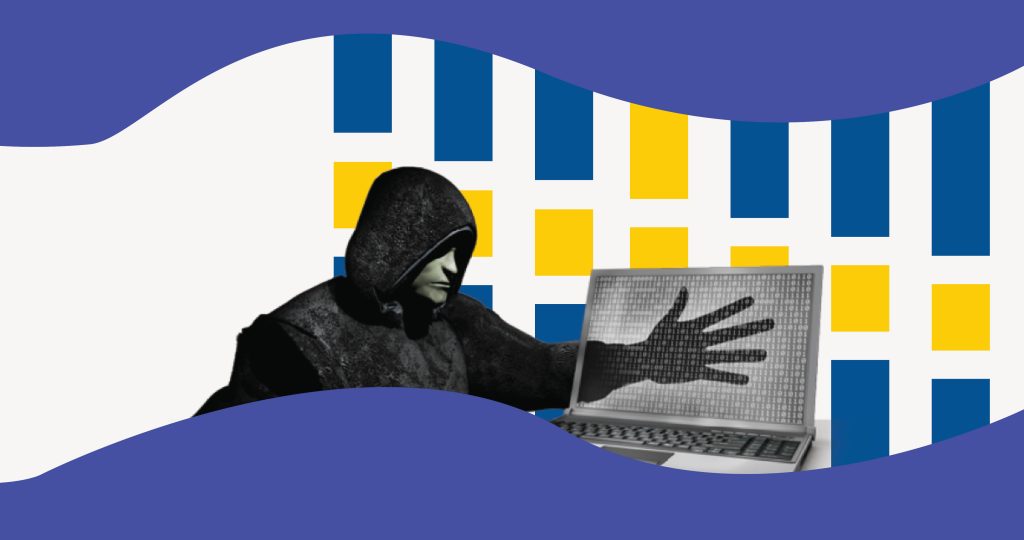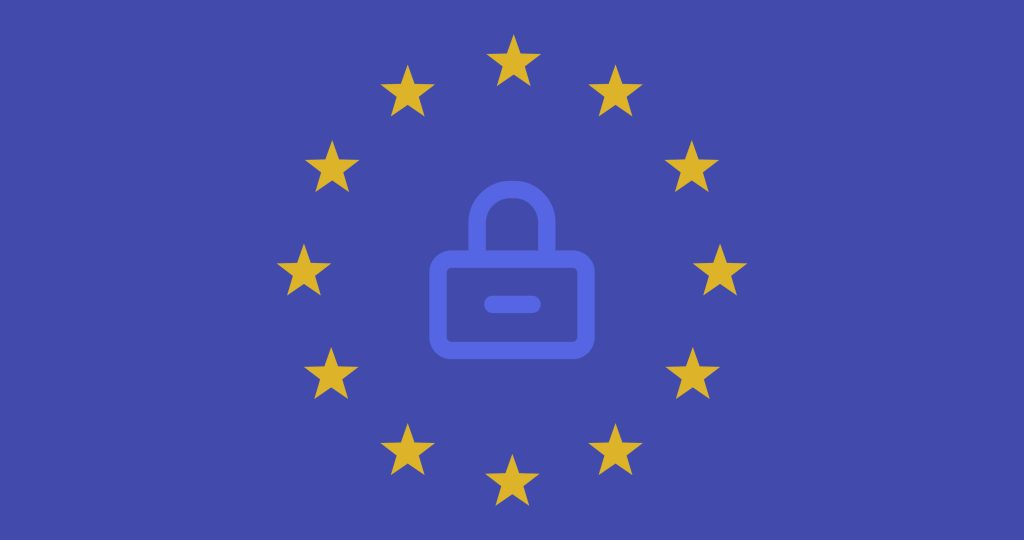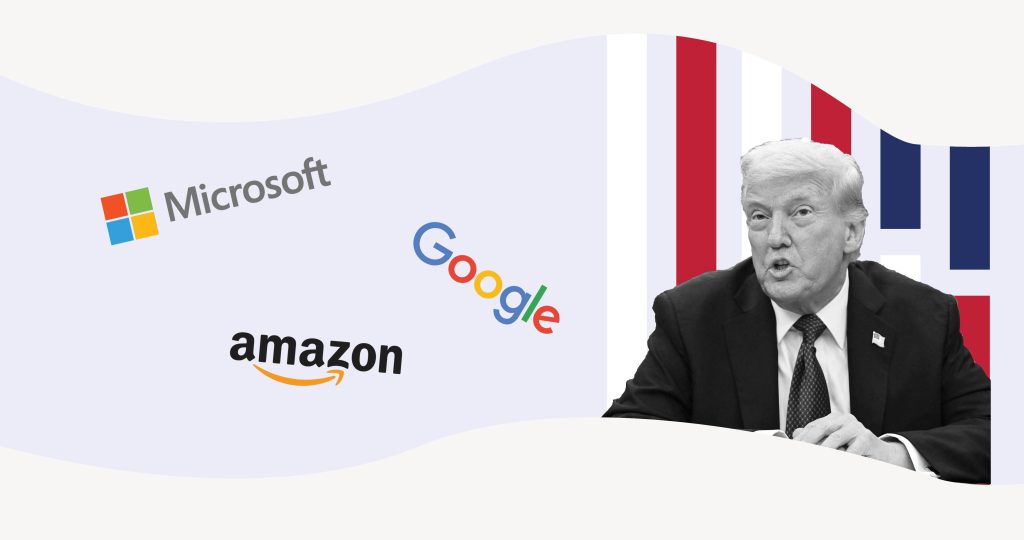Global Cloud Disruptions, Autumn 2025

During October and November 2025, several major cloud outages occurred at both AWS and Microsoft Azure. These incidents affected everything from social media and e-commerce to healthcare and enterprise applications – demonstrating how quickly a technical failure at a major provider can create widespread impact. In many cases, the disruptions were not caused by attacks but by internal issues: misconfigurations, lack of redundancy, or hardware failures in central data centers. Even though these environments are built for high availability, many users temporarily experienced difficulties logging in, working, or accessing their systems. Many analysts argue that this autumn’s incidents point to broader structural challenges. When large parts of the digital infrastructure depend on just a few global cloud providers, a single incident can affect not only individual companies but entire sectors at once. The concentration has made the world more efficient – but also more vulnerable to disruptions. Risks, Dependencies, and Compliance The disruptions reveal not only technical vulnerabilities but also raise questions around dependency and compliance: Technical vulnerability: if one region is affected, many services can be disrupted simultaneously. Legal risk: U.S. laws such as the CLOUD Act can, depending on the situation, result in the disclosure of data even from servers located within the EU. Operational risk: a strong dependency on a single provider can extend recovery times during incidents. Why Swedish Hosting Can Be Part of the Answer One way to reduce risks is to strengthen data sovereignty and local control. VisionFlow offers a platform where all data is stored in Sweden, under Swedish and European legislation. This means: Full control over data processing and access. Redundant data centers within Sweden for high availability. Support for GDPR, NIS2, and DORA. Complete traceability for audits, security, and incident management. By combining Swedish hosting, transparency, and a secure development process, VisionFlow provides a solution built on robustness, traceability, and compliance. Next Steps This autumn’s outages highlight how a centralized cloud landscape can become fragile. To strengthen resilience, organizations must consider availability, data sovereignty, and regulatory compliance — not just price and performance. With VisionFlow’s Swedish-hosted platform, you gain a stable and traceable solution with clear control over operations, security, and data. Book a demo Contact us
Cybersecurity in the Public Sector

Digitalization has made it possible for Swedish public authorities to deliver services in ways that were once unthinkable. But the growing dependence on digital infrastructure has also made the public sector more vulnerable. To address these threats, we must understand the real costs of IT failures and cyberattacks – and how they can be prevented. At eFörvaltningsdagarna 2025, experts from the FRA, NCSC, and ethical hackers will gather to discuss digital sovereignty and the future of cybersecurity.
Over 1,800 Cyberattacks per week – why robust, traceable, and Swedish systems are essential

Recent reports show that Swedish organizations are exposed to an average of over 1,800 cyberattacks every week – a figure that places Sweden among the most targeted countries in Europe on a per-organization basis. The public sector is especially vulnerable, and the number of attacks has risen sharply in recent years.
Analytics Tool: Gain Full Control Over Your Data

Get a complete overview with our analytics tool The ability to analyze data is important across the entire organization. With VisionFlow, you always have access to an integrated analytics tool that lets you easily create an overview of all key aspects of your business. Review open cases, track all sales inquiries, and categorize every question so you can prioritize more effectively 📊 Categorize every case Case management and statistics help you become more productive.In our analytics tool, you can view statistics to increase the efficiency of your case management, track the number of incoming cases, and monitor how they progress. Divide cases into categories that suit your organization to create a seamless workflow. Increase productivity Stay on top of productivity and see how all cases develop. Identify bottlenecks early and resolve issues faster with a consolidated view of all open cases. Provide support and guidance to employees who get stuck on a case and improve efficiency across the entire organization at an early stage. By quickly offering customers the right solutions, you also increase customer satisfaction and build a reliable customer experience for each individual. Never miss a business opportunity! With the help of our analytics tool, you can access comprehensive statistics on incoming sales inquiries and categorize them for a clear overview of all types of requests. Never miss a new opportunity with potential customers, and ensure nothing slips through the cracks with the right statistics. Why VisionFlow VisionFlow is a Swedish-owned company with all servers located in Sweden. With us, you can feel secure about your data. When you use VisionFlow, you can trust that all information and personal data is protected in compliance with Swedish data protection legislation. Your company’s and your customers’ integrity remain within national borders and are safeguarded at the highest level. VisionFlow is a system that grows with your organization. Large or small, whatever your needs, we have a solution for you. Our system allows you to configure freely to meet your specific requirements. Our flexible platform is also one of the most cost-effective on the market. Everything shouldn’t have to cost more just to be right. With VisionFlow, you always have access to the analytics tool—without needing to purchase an additional add-on module. Curious about what we can do for you? Boka en personlig demo och upptäck möjligheterna med VisionFlow Book a demo
NIS2 – What It Is and How It Affects Your Organization

What is NIS2 and why is it introduced? NIS2 is the EU’s updated directive on network and information security, aimed at raising the common level of cybersecurity across the Union. It replaces the first NIS directive from 2018 and comes with stricter requirements. The EU introduced NIS2 because the original law was no longer considered sufficient to address today’s cyber threats and society’s reliance on digital systems. In short, there was a need for stronger and more harmonized regulation to protect critical infrastructure and services against increasingly sophisticated attacks. Impact in Sweden For Sweden, NIS2 means a major change. The number of sectors covered increases from seven to eighteen, and for the first time includes public administration (national and regional authorities). The scope of private sectors also expands: in addition to energy, transport, banking, and healthcare, NIS2 now covers food supply, manufacturing industry, chemicals, digital service providers, postal and logistics services, waste management, and research. In practice, a large number of companies in these industries will be affected, provided they are medium-sized or larger (≥50 employees or €10 million turnover) – and in some cases even smaller actors if they perform critical societal functions. Overall, the number of affected Swedish organizations is expected to increase dramatically – from about 900 today to an estimated 6,000–8,000 when NIS2 takes effect. To implement the directive, a new Swedish Cybersecurity Act is being prepared, where NIS2 and the related CER directive (critical infrastructure) will be merged. A government inquiry (SOU 2024:18) has proposed how the law should be designed, and the government plans to present a bill in 2025. According to the current timeline, the law is expected to enter into force around the turn of 2025/2026, with a transition period for organizations to register and comply. Supervision and sanctions All affected organizations must register with their supervisory authority once the law comes into force. Each sector will have one or more designated supervisory authorities that monitor compliance and issue regulations. MSB (the Swedish Civil Contingencies Agency) will have a coordinating role nationally and also serve as the national contact point to the EU. Private companies risk significant fines for shortcomings – up to €10 million or 2% of global turnover for “essential” entities, and €7 million or 1.4% for “important” entities. Public organizations are subject to requirements and supervision but are not subject to financial penalties. Requirements on IT security, incident reporting, supply chains, and documentation NIS2 introduces stricter requirements in several areas: Strengthened IT security and risk management: Regular risk assessments, action plans, multi-factor authentication, encryption, and active responsibility at management level. Mandatory incident reporting: Early warning within 24 hours, detailed report within 72 hours, and final report within 30 days. Supply chain security: Organizations must assess and monitor risks in their supply chains and ensure that their providers also meet cybersecurity standards. Documentation and traceability: Policies, processes, and technical measures must be documented and traceable so that compliance can be demonstrated during inspections. How VisionFlow helps organizations comply with NIS2 Complying with NIS2 can feel challenging, but modern tools make the job easier. VisionFlow can support your NIS2 work in several ways: Incident handling and traceability: Full logging, categorization and follow-up of incidents. Simple reporting options, including for regulatory reporting. Documentation and knowledge sharing: Collect policies, procedures and guides in a central knowledge base with controlled access. Assets, suppliers, and continuity: Manage IT assets in a CMDB, link cases to supplier contracts and ensure SLA follow-up. Swedish provider: VisionFlow is hosted in Sweden, under Swedish and European legislation—reassuring for organizations with high compliance requirements. Professional and systematic management of IT security is the key to meeting NIS2. With VisionFlow, you gain both overview and control. It shouldn’t be hard to follow the applicable security rules! Sources MSB – “Det här är NIS2-direktivet” https://www.msb.se/sv/amnesomraden/informationssakerhet-cybersakerhet-och-sakra-kommunikationer/krav-och-regler-inom-informationssakerhet-och-cybersakerhet/nis-direktivet/det-har-ar-nis2-direktivet/ Regeringen/SOU 2024:18 – “Nya regler om cybersäkerhet” https://www.regeringen.se/contentassets/1e56bf5cad214fc78eb80d91c11cccb6/nya-regler-om-cybersakerhet-sou-202418.pdf MSB – “Tidsplan för NIS2-införandet i Sverige” https://www.msb.se/sv/amnesomraden/informationssakerhet-cybersakerhet-och-sakra-kommunikationer/krav-och-regler-inom-informationssakerhet-och-cybersakerhet/nis-direktivet/tidsplan-for-nis2-inforandet-i-sverige/ Digital Strategy EU – NIS2 Directive: securing network and information systems https://digital-strategy.ec.europa.eu/en/policies/nis2-directive Directive (EU) 2022/2555 – “NIS2-direktivet” https://eur-lex.europa.eu/eli/dir/2022/2555/2022-12-27/eng
Europe’s Dependence on American Tech Giants Is a Growing Risk

When Swedish national television (SVT) recently reported on Europe’s digital vulnerability, it highlighted an issue long debated by researchers but only now taken seriously by decision-makers. Today, nearly all IT infrastructure in Europe depends on American tech giants – led by Amazon, Microsoft, and Google. In fact, U.S. providers dominate around 80% of the European cloud market. This means our digital everyday life largely rests in the hands of foreign actors.